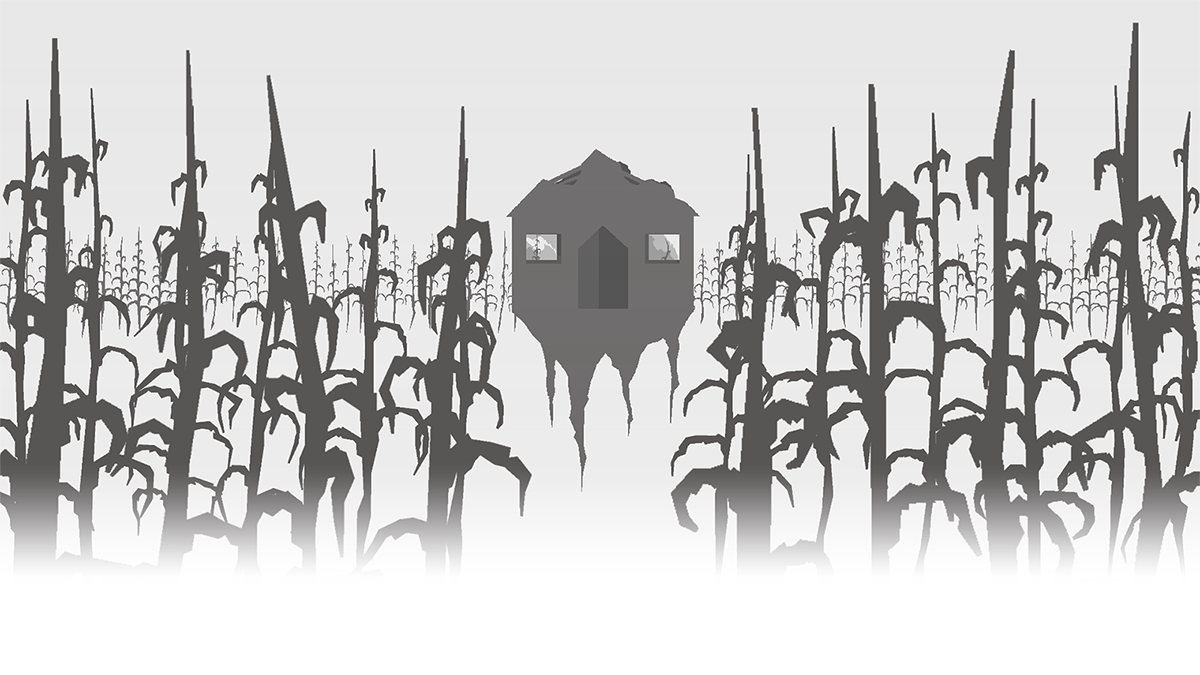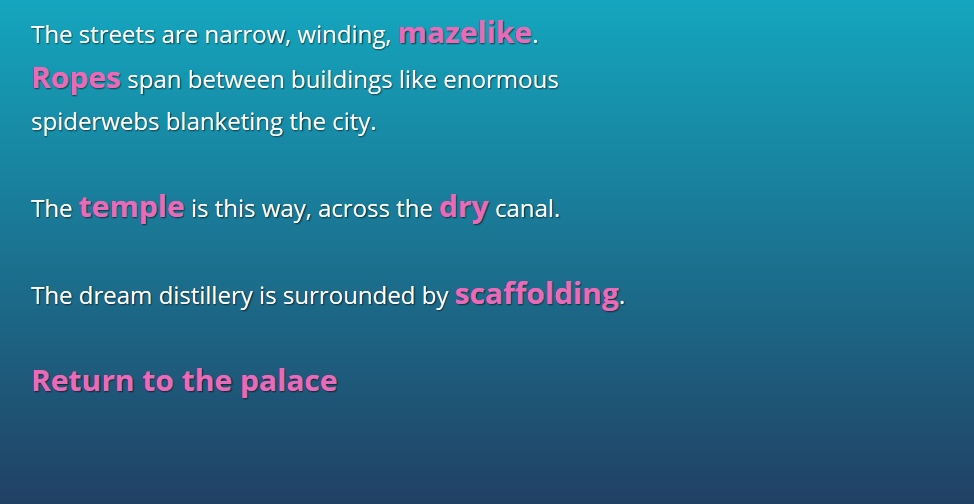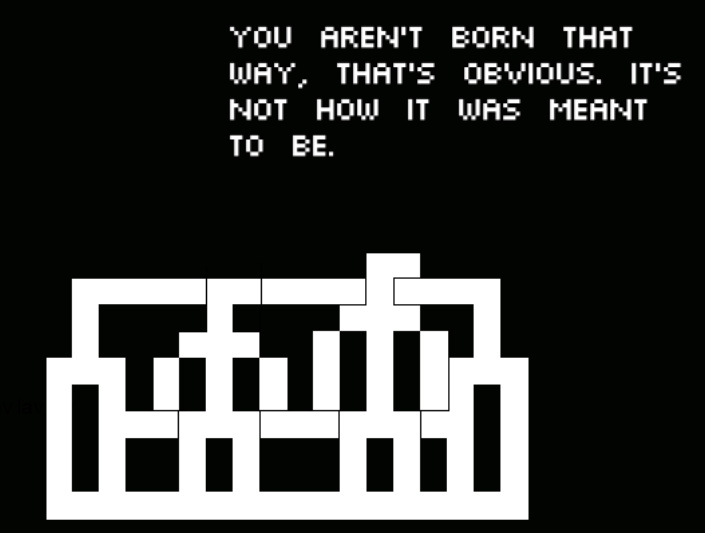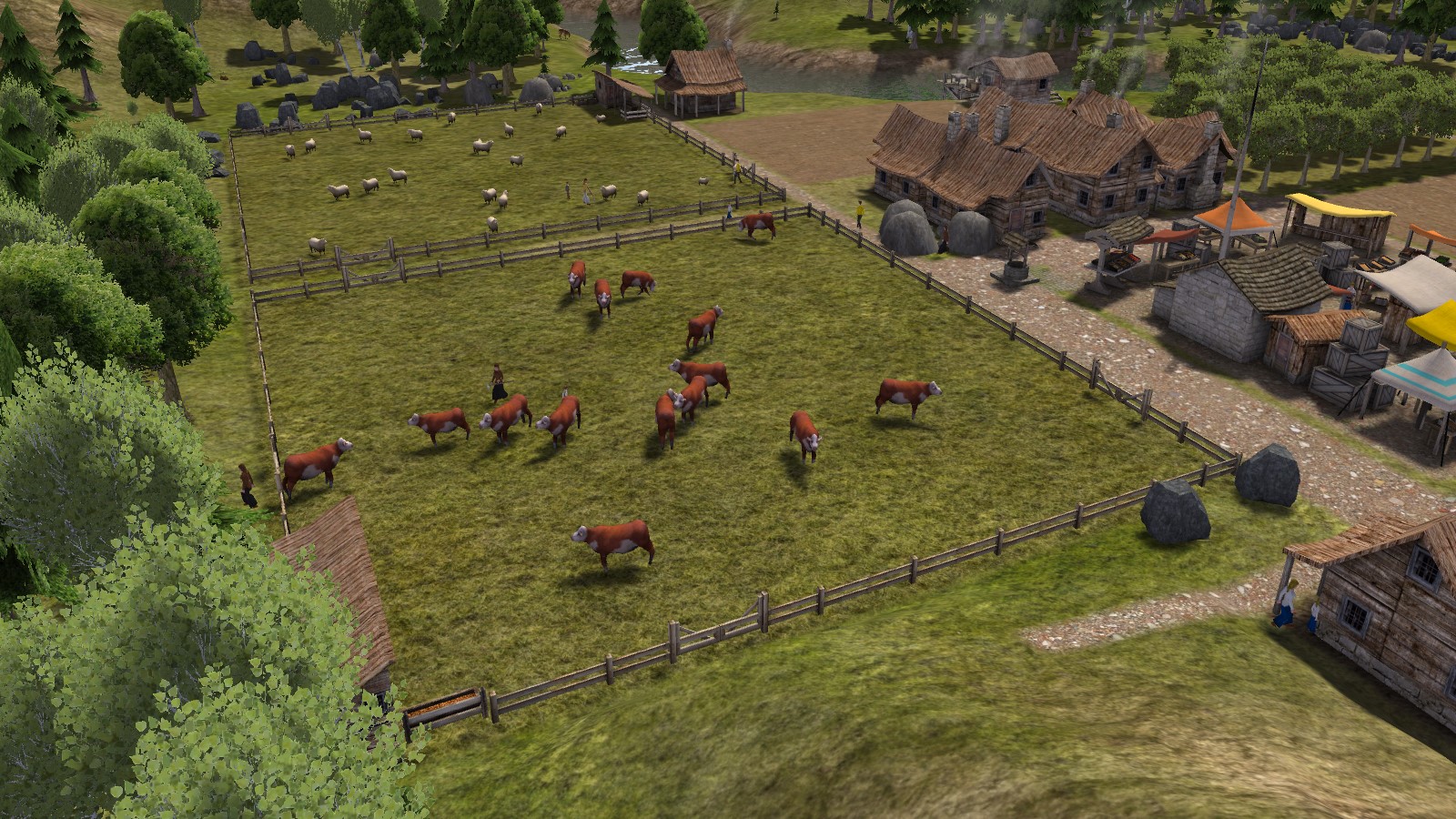
Games of 2014 (14/15)
Unrest, Three Fourths Home, With Those We Love Alive, Talks With My Mom, and Banished take us towards the end of week three.
Unrest
An ambassador, a mercenary, a princess, a peasant and a priest. These are the shoes we step into and the eyes we see out of. Bhimra, the Ancient Indian city-state Unrest takes place in, is in trouble. We try and guide the fates of these five in the hope of bettering them and the kingdom at large. But really, we are none of them. We are an outside observer using them to gain perspective.
The game places the player at a distance from the story and the characters. As much as we may have empathized with Tanya’s plight and wish to escape the caste system – I even did all I could to help her achieve that dream – other characters have other wishes and once she leaves our control the wheels of fate turn once again. While each of the characters seemingly has a lot of agency, once we are pulled from their point of view, we realize how little effect they had. Yet, at the same time each character’s path crosses others in subtle ways. Small words and small actions can slightly improve, hinder, educate or end the lives of others. In the grand scheme, it’s ultimately meaningless, but means a great deal to those five with our sympathies.
Unrest isn’t not about the strife amongst the people during a famine and their prejudice against new immigrants, there as part of a treaty meant to ease the famine. This is all setting and backdrop. Even the plot of revolution and the seizing of power between different parties is revealed to be unimportant. Instead Unrest is painting a picture of a point in time. Through the combined layers of different viewpoints and the interconnectedness of the threads that bind the city together, we accumulate an understanding of the situation and problems that Bhimra faces. Everyone may want to fix the city, but no one may be able to.
While the wheel of fate turns ever forward, we cannot affect it, yet we can affect each other. The big things are out of our hands. Even for a princess. All that is in our power are the small adjustments we choose to make in the lives of others. They build up over time and there lies hope. We guide fate. We do not control it.
Eric Swain is a columnist, reviewer and frequent podcaster for PopMatter‘s multimedia section, a curator for Critical Distance and has his own site The Game Critique.
Three Fourths Home
The past five to ten years have seen interactive fiction enjoying something of a resurgence, with the ubiquity and accessibility of tools like Twine and RenPy making games in the genre easier to both make and to play. The side effect of similar tools being used is that you end up with a lot of similar games, whether it be hypertext choose-your-own adventure stories common in Twine or the visual novel-style offerings.
Three Fourths Home is unique in that it manages to capture the personal connection inherent to so many interactive fiction stories, but it does so in its own way with its own style and its own simple – but undeniably beautiful – aesthetic. Its controls and input are incredibly simple, likely to mirror the mundane act of driving the game’s protagonist carries out throughout the course of the 20-minute game. More striking than its originality, however, is its relatability. In the universal lies specificity, and the story of the 20-something college grad returning home to small town Ruralia, USA and finding that the trappings of her childhood – her town, her house, even her family – aren’t quite the same as she remembers them, speaks to almost every person of our generation on some level or other.
Ostensibly, Three Fourths Home isn’t really a game “about” much at all. But if you don’t make the common mistake of getting hung up on the interactions and instead allow yourself to simply inhabit the characters, particularly the protagonist, you’ll find a game that manages to speak to players on a more personal level than many games exponentially larger and more complex.
Patrick Lindsey is a Boston-based game critic and occasional developer. He loves talking about narrative design in shooters so much that he’s writing a book about it. You can follow him on Twitter.
With Those We Love Alive
The first sentence is an instruction: “Before living this life, have a pen or sharpie nearby, something that can write on skin.” The second screen reminds you that “nothing you can do is wrong”, but the letters quickly blend into the background and disappear.
Those words express the core of the design philosophy behind Porpentine’s Twine game With Those We Love Alive. Her terms are exact: it’s not a matter of playing, but of “living this life”. She is clearly concerned that the aesthetic experience of dwelling in the universe she created may be superseded by an instinct to play correctly. The correct way of approaching her work, she argues, is not to break it down into mechanical rules to be exploited and manipulated towards a desired outcome, but to inhabit the game’s space, expose oneself and accept the illusion.
Her words evoke a mysterious place, at once beautiful and terrible, rich with symbolism and inhabited by an impossible taxonomy that draws on disparate fantasy traditions. The game space is unintelligible, it cannot be navigated through logic or rationality: the player can only rely on instinct, intuition and unconscious associations to find a semblance of meaning and order.
With Those We Love Alive points at the way it transcends the screen. By having the player transfer the scars and memories of their virtual life on their physical body, it becomes part of their reality, of their intimacy. Without meaning to reduce it to a gimmick, the fascinating, ephemeral and undecipherable art galleries it creates on players’ skins are no doubt its most remarkable achievement.
Melody is passionate about games, words and music, and she expresses her love by meowing. You can find her on her blog, and on Twitter.
Talks With My Mom
Not your typical game. The beauty of Talks With My Mom is how it strips away various videogame elements – including avatar movement and hyperlink clicking – to underline developer Vaida’s personal expression.
You play as a stick-figure gay teen who responds to the pushy and bigoted remarks of her stick-figure mother. Despite not being able to move an avatar, there’s no question you are meant to identify with the daughter. Unhindered by hyperlinks, you advance in Talks With My Mom by clicking anywhere. Through the speed and delay of clicking, you can influence the tempo and drama of the mother-daughter conversation.
Not only is Vaida’s comic-book approach more genuine, funny, and revealing than Gone Home’s horror contrivances and 1990s nostalgia, the message in Talks With My Mom isn’t filtered through political or cultural superiority. Understandable parental worry drives the conclusion when the mother says, “The majority of people will judge you. Can’t you just make life easier for yourself by changing just a bit?” Vaida’s reply is both a daughter’s realization and a clear artistic statement.
Jed Pressgrove regularly writes at his blog, Game Bias. He has been published in Paste, Pixels or Death, StoryCade, and Defunct Games.
Banished
Banished is a different kind of city management game. Take Sim City and set it the Colonial period, put the focus on keeping a sustainable population rather than just the happiness of citizens, and you have Banished, a game that focuses and operates at the individual citizen level, rather than at the overall city level.
This game was part of the early-access boom that 2014 fostered in, but unlike many of its counterparts, it delivered with a playable and mostly fun experience for simulation game fans.
In Banished it is important to use your resources wisely; to make sure you don’t overwork the land, but make sure you work it enough to keep your people happy, and possibly more importantly, to keep them creating more people. If you don’t keep your birthrate up, you’ll have a bad time in Banished, but get it too high and you won’t be able to support all of the people who will be clamoring for food and supplies to stay warm in the winter.
In short, it is a deep game, but accessible enough to allow for non-simulation game veterans to enjoy. For those growing a bit tired of the same old city building formula, Banished was a nice change of pace.
Zac Davis is a graduate from Shippensburg University with a degree in Communication/Journalism, but he took a job as a software developer. He now writes about videogames and technology in spare time and hosts the WKND Gamer podcast every weekend.



